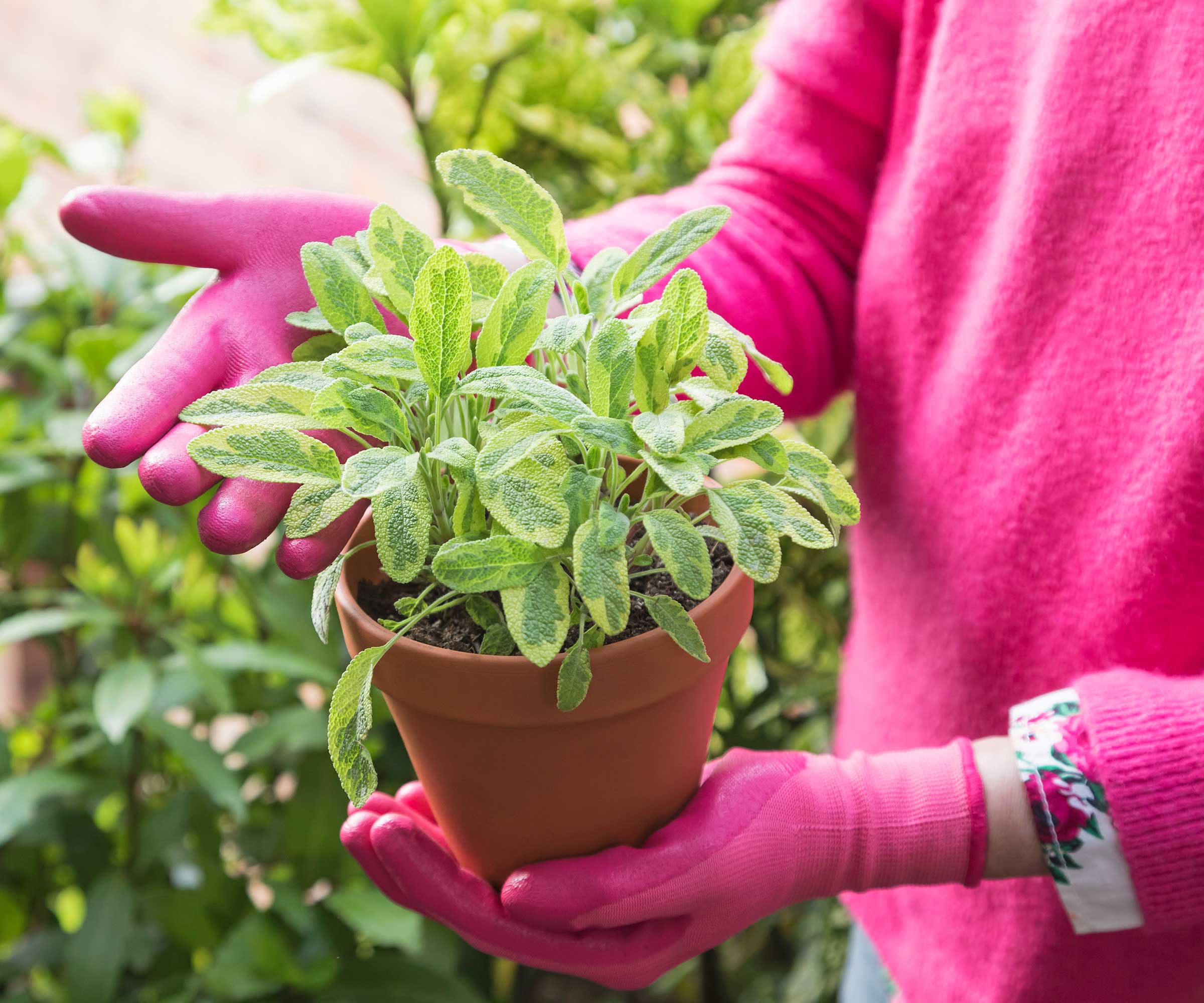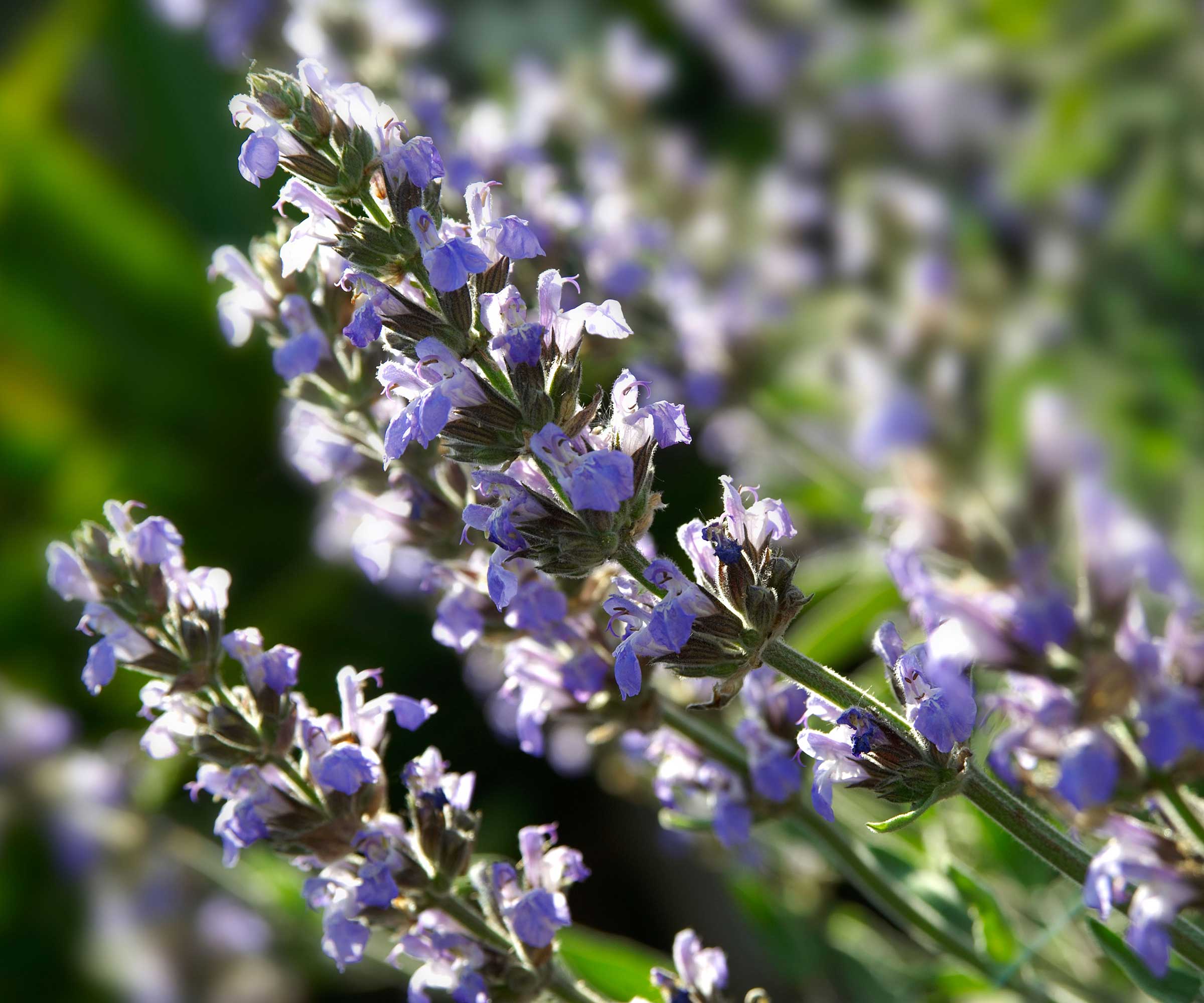
Culinary forms of sage are great additions to a herb garden. Like rosemary, they are shrubby perennials, with most producing summertime blooms. And, also like rosemary, these plants are evergreen, so you can harvest their fragrant foliage all year round for use in the kitchen.
Sage leaves have a deep, earthy flavor that's truly unique. They are wonderful when fried and served as a crispy garnish to soup, or flung into stews to add depth. And if you're harvesting herbs for Christmas cooking, they are an essential component of stuffing.
Sage can be grown in raised beds or containers successfully, but there are a few tricks to take on board if you want this Mediterranean native to thrive.

3 tips for growing sage successfully
The number one rule to remember when growing sage is that it hails from hot climes. You can still grow it in slightly cooler conditions (most will grow in USDA hardiness zones 4-10), but it won't thrive in excessively wet or cold environments.

1. Plant it in the right place
'You can plant sage outdoors when the ground temperature reaches between 60°F and 70°F,' says Charmaine Peters, a gardening expert from Arden. 'The plant thrives in sandy, loamy soil that drains well, with an ideal pH range between 6.0 and 7.0 for optimal growth.'
Planting in boggy clay will likely cause the plant to struggle. If your backyard has this type of soil, opt to grow sage in containers instead of directly in the ground, and mix plenty of horticultural grit into the potting mixture.
As well as well-draining soil, sage requires a location with full sun – 'at least 6-8 hours per day,' as Anna Ohler of Bright Lane Gardens points out. The area should also be relatively sheltered.
'Space the plants around 18-24 inches apart to ensure good air circulation,' adds gardening expert Reese L. Robbins of Just Pure Gardening.
Top tip: 'Use a balanced, slow-release fertilizer in the soil during planting to help give the young plant a good start,' recommends Charmaine.

2. Be careful not to overwater it
'Sage is a drought-tolerant herb that prefers drier soil,' highlights Autumn Hilliard-Knapp of Perfect Plants Nursery. In fact, overwatering can lead to root rot, as Reese points out.
However, newly planted sage needs regular watering to encourage the roots to fully establish. 'Once the plant has reached its full size, you can decrease watering to just when the soil is dry,' Anna says. 'When you do water sage, water it deeply and make sure the soil is completely soaked.'
Remember, you'll need to water plants in containers more frequently than those in the ground, as they dry out faster.

3. Prune and harvest sage properly
Harvest sage regularly to encourage new growth and enjoy the aromatic leaves in your culinary creations, says Autumn. For extra flavor, it's best to pick them in the morning, when the oils in the leaves are at their peak, she adds.
'The younger leaves taste better than the older ones,' Charmaine says. 'If you want to dry them, cut stems that are six to eight inches long, bundle them, hang them to dry, and store the dried leaves in sealed containers in a cool, dark place to preserve their flavor and potency.'
Giving your sage an annual prune is also advised. 'Pruning sage helps maintain its shape, encourages bushier growth, and prevents it from becoming leggy,' says Autumn. She recommends doing this in early spring.
Always use clean and sharp pruners to do so. These bypass pruners from Fiskars at Amazon are perfect for the job.
Top tip: Deadhead sage flowers as they go over, to encourage fresh growth.

FAQs
Can you grow sage indoors?
Yes, sage can be grown as an indoor herb in a pot, as long as it gets plenty of sunshine and is kept away from cold drafts.
'Place the pot near a sunny window or in a spot with about six hours of sunlight,' recommends gardening expert Charmaine Peters. 'If you don't have an indoor spot with much daily sun, you may use fluorescent lighting, which should be placed at least five inches above the plants. Expose your plant to the lights for 14 to 16 hours daily.'
Will sage survive the winter?
Sage should survive the winter if your hardiness zone is suitable, however there are a few things you can do to help protect it from frosts.
During severe winters, a layer of mulch will help to protect the roots while a breathable fabric can be used to cover the leaves, recommends gardening expert Reese L. Robbins. 'If grown in pots, moving them indoors or to a sheltered area shields them from freezing temperatures.'
Which garden pests can affect sage?
'Sage is relatively pest and disease-resistant,' says Anna Ohler of Bright Lane Gardens, adding that she rarely has issues with insects or wildlife eating her crop.
However, do keep an eye out for slugs and take measures to get rid of them where necessary, such as setting beer traps. Powdery mildew can also be problematic, which is why it's important to space these plants out to promote good airflow.
If you're planning a new herb garden, sage is definitely worth considering for the list. Like thyme and bay, it'll keep on giving year after year, while looking pretty in your yard.
And if you love their look – and particularly their flowers – don't forget about the non-culinary varieties of sage, too. These ornamental plants are known as salvias, and there are lots of varieties to choose from to brighten flower beds and pots.







